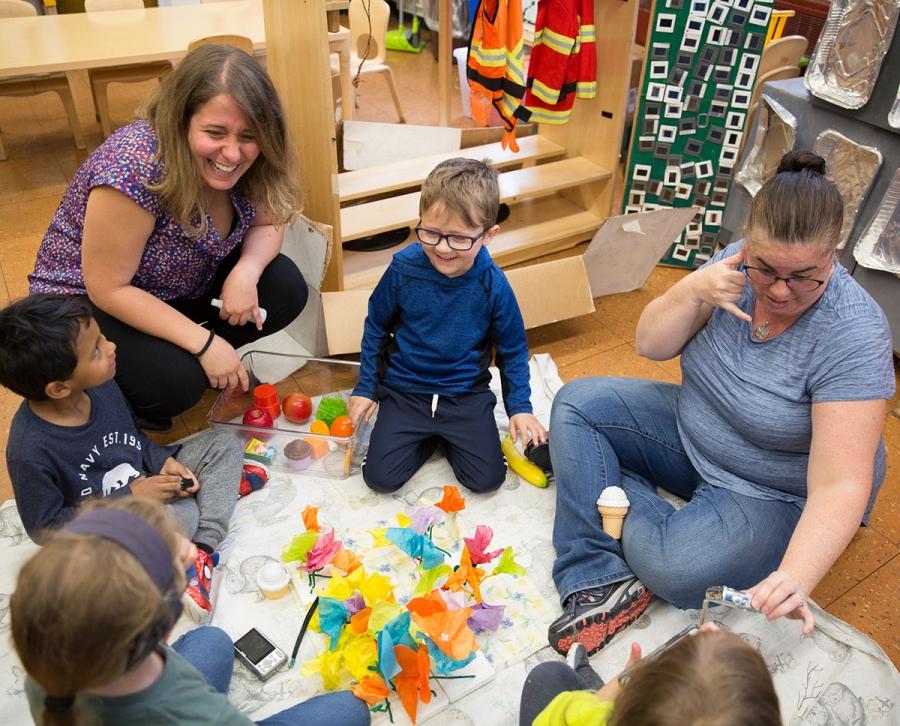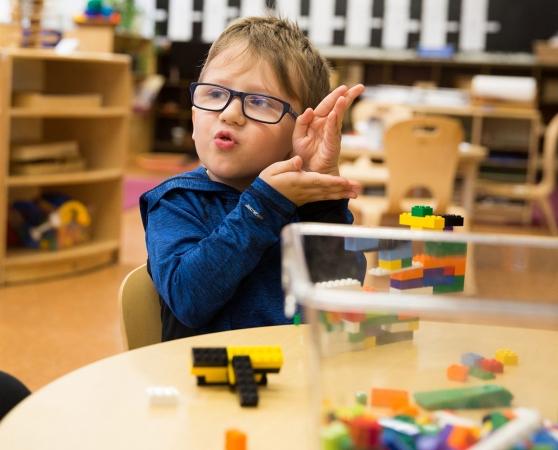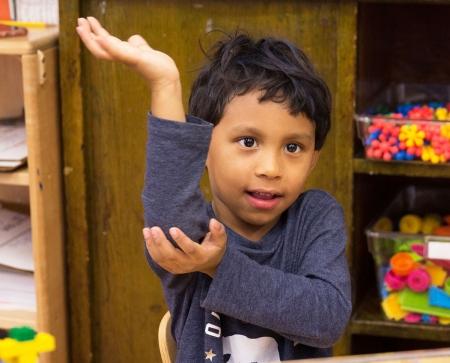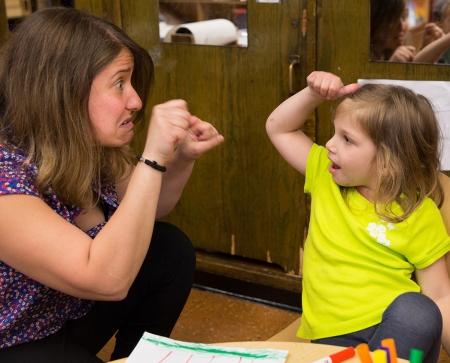When Rita Fattorusso invites one of her prekindergarten students to the front of the class to lead morning exercises, the other students pay strict attention. If they don’t, they’ll miss their classmate’s instructions: He uses American Sign Language to tell them to do eight jumping jacks, mimicking the action and counting out the number eight on his fingers.
Soon the students, Fattorusso and co-teacher Eileen Lograno are all doing jumping jacks in the sunny classroom at the American Sign Language and English Lower School in Gramercy Park, Manhattan.
It’s a dual-language classroom composed of children from around the city. Some of them, like Fattorusso, are deaf. Some have deaf parents or deaf siblings. And some are hearing children from the neighborhood with no deaf family members.
“I teach that we’re all unique individuals from different cultures and families, and being respectful is key,” says Fattorusso, communicating through an interpreter.
Fattorusso, who received a Department of Education Big Apple Award for teaching this year, is a whirlwind of energy as she moves through the class connecting with her students, making sure each one is engaged and on task.
“She’s a go-to person for a lot of parents, and she’s a phenomenal teacher,” says Chapter Leader Michael Nappi.
Fattorusso says communicating with hearing children is her biggest challenge. “I use a lot of visuals at the beginning, and they slowly learn American Sign Language,” she says. First she teaches them to “sign” their names and emotions. Their young, impressionable brains pick up ASL fast, she says. A crucial early lesson is teaching them to make eye contact — a lost art in the smartphone era — so they don’t miss any signals from teachers or classmates.
Her guidance for nurturing conversations between hearing and non-hearing students is simple: don’t shout, but instead use visual cues, gently tap a shoulder or wave to get attention. To get the attention of everyone in class, Fattorusso will flash the lights in the room. She has the help of her co-teacher, Lograno, who is fluent in sign language, and a hearing paraprofessional.
“Rita creates a sense of community inside and outside of her classroom,” says Darren Fudenske, also a deaf teacher. He notes that she takes her students’ ideas very seriously: When the class project was building cardboard skyscrapers, her students saw vintage 35mm slides as perfect miniature windows, so she rounded up as many as she could find for them to use.
It’s not unusual for Fattorusso to follow her students’ lead, and that’s by design. She models her classroom on the Reggio Emilia approach — named after the Italian town where it was developed — which incorporates literacy, math and other lessons in a curriculum driven by students’ interests.
“Children become active participants in their education but it requires planning,” says Rose Werner, the school’s preschool coordinator.
Fattorusso will often call her to ask if a certain project is right for the program. The skyscraper project not only involved measuring as they built their models, but it also was an opportunity for a discussion comparing and contrasting urban and rural life.
Most of the 200 children in the preK–8 school come from low-income families, and several are bused in from shelters around the city. Fattorusso says 20 families rely on a food pantry she started five years ago in a partnership with Trader Joe’s and a non-profit organization called Backpack Buddies. The food is distributed twice a week with the help of Backpack Buddies and other volunteers who fill backpacks with fresh fruit, vegetables and other perishables for distribution. The pantry of clothing, donated by parents, is organized by size, with apparel for all family members arrayed on shelves and in closets.
“We have great parents who donate tons of clothing,” Fattorusso says. “Typically we reach out to parents at open school nights or parent-teacher meetings. Someone will tell us they need a sweatshirt or T-shirt. We’re available all the time when parents contact us.”
Resources from both pantries are shared with the high school and District 75 school that occupy other floors in the building.
Fattorusso’s approach nurtures students and their families. “She creates such a warm feeling in the classroom,” Werner says. “It’s an inviting atmosphere, and parents love to hang around and talk to her.”
It’s no wonder a parent, Natalie Gruppuso, nominated Fattorusso for the Big Apple Award.
“She is kindhearted and always puts the children’s needs first,” says Gruppuso. “We are lucky to have her.”



